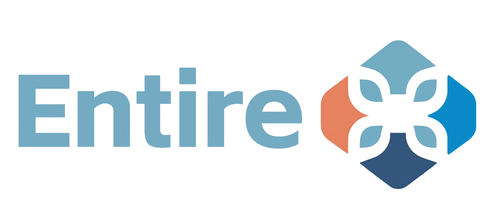Toy Industry Alert (HS 9503): Navigating Tariffs on Dolls, Games, & Electronic Toys

The 2025 US tariffs on Chinese imports are sending shockwaves through the diverse toy industry, encompassing everything from dolls and action figures to board games, construction sets (like LEGO), and electronic toys under HS Code 9503. Executives at companies like Mattel, Hasbro, LEGO, and Spin Master, as well as numerous specialized toy manufacturers, need agile strategies to navigate sourcing disruptions, cost escalations, and complex compliance requirements.
- 1. Toyland's Tight Grip: How Much Does the US Toybox Depend on China?
- 2. Global Game Changers: Scouting New Lands for Toy Manufacturing?
- 3. The Price of Play: Cost Realities of Shifting Toy Production from China?
- 4. Made in Mexico? Navigating USMCA for Games and Electronic Toys?
- 5. Cards on the Move: Shipping Collectible Games – Asia vs. Mexico?
- 6. Wheels of Worry: Safety Standards for Scooters & Ride-On Toys?
- 7. Toy Teardown: Uncovering Material Supply Chain Risks in Toymaking?
1. Toyland's Tight Grip: How Much Does the US Toybox Depend on China?
How extensive is the US import reliance on China for specific categories within HS 9503 toys (e.g., Barbie dolls, LEGO sets, Hot Wheels cars, drones, plush toys)?
US reliance on China for HS 9503 toys is profound and varies by category:
* Dolls & Action Figures (e.g., Barbie, Marvel Legends): Estimated 75-90% manufactured in China due to specialized molding, painting, and assembly lines.
* Construction Sets (e.g., LEGO, Mega Bloks): While major brands like LEGO have global factories (e.g., Mexico, Hungary, Denmark), China remains a significant source for components and smaller brands, perhaps 40-60% overall.
* Vehicles, Trains, RC Toys (e.g., Hot Wheels, remote-controlled drones): China dominates, with 80-95% share for die-cast cars, plastic vehicles, and most consumer drones/RC toys.
* Plush Toys (e.g., GUND, Squishmallows): China is a primary hub, accounting for 70-85% due to fabric sourcing and sewing expertise.
* Games & Puzzles (Board games, card games like Magic: The Gathering): Printing, die-cutting, and assembly for many mass-market games see 60-80% from China.
2. Global Game Changers: Scouting New Lands for Toy Manufacturing?
Beyond China, what are key alternative production locations for toys like LEGO construction sets, Spin Master's RC vehicles, or Bandai's anime models, and who are notable suppliers?
Diversification is happening, but capacity and expertise vary:
* Construction Sets (LEGO-type):
* LEGO itself: Mexico, Hungary, Denmark, Czech Republic, and expanding in Vietnam.
* Other Brands/OEMs: Some capacity in Vietnam, India, and potentially Eastern Europe.
* RC Vehicles & Drones (Spin Master, DJI type):
* Vietnam & Malaysia: Growing for electronics assembly, some RC toy makers are expanding here.
* Limited Alternatives: High-tech drone components are still heavily China-centric.
* Models & Collectibles (Bandai, McFarlane Toys type):
* Vietnam: Some Japanese and US companies have shifted or expanded model kit/collectible production here.
* Japan: High-end, smaller-run collectibles often still made in Japan.
* General Toy OEMs: Major contract manufacturers like Foxconn (less so for toys but indicates trend), Jetta Company, Wah Shing Toys, Lung Cheong Group have facilities in China but also explore SE Asia.
3. The Price of Play: Cost Realities of Shifting Toy Production from China?
What are the typical unit cost percentage increases when sourcing plush toys (e.g., GUND-like quality) or plastic model kits from Vietnam, India, or Mexico compared to China?
Cost premiums are common:
* Plush Toys (GUND-quality):
* Vietnam: +10% to +25% due to labor rates, fabric sourcing, and efficiency.
* India: +15% to +30%, with potential for longer lead times initially.
* Plastic Model Kits (e.g., similar to Airfix or Revell):
* Vietnam/Malaysia: +12% to +28%, depending on mold complexity and plastic resin costs.
* Mexico: Potentially +15% to +35% if new molds and skilled labor are needed. Tooling amortization is a key factor.
4. Made in Mexico? Navigating USMCA for Games and Electronic Toys?
For assembling Hasbro's "Monopoly" board games or VTech's electronic learning toys in Mexico, can USMCA origin rules be met? What are the specific origin requirements for paper, inks, and small electronic modules?
USMCA for toys assembled in Mexico is achievable but detailed:
* Board Games (Monopoly): Often relies on Tariff Shift rules. Paper components (boards, cards, boxes) might need to be printed and die-cut in North America (US, Mexico, Canada) using NA-origin paper/inks or undergo substantial transformation. The "trivial" plastic game pieces might be sourced globally if the value contribution is low.
* Electronic Learning Toys (VTech): RVC (Regional Value Content) of 50-60% is common. This means a significant portion of the toy's value (including critical electronic modules, PCBs, housings) must originate in North America or be sufficiently transformed there. Sourcing NA-compliant microcontrollers, sensors, and displays can be a challenge.
* Timeline: Qualifying a toy for USMCA can take 6-18 months including supply chain audits and certification.
5. Cards on the Move: Shipping Collectible Games – Asia vs. Mexico?
How do transit times and transport costs compare for a container of "Magic: The Gathering" or "Pokémon" trading cards shipped from China or Vietnam versus trucked from Mexico to US distribution hubs?
- China/Vietnam (Sea to US WC + Inland): 30-55 days. Ocean freight for a 40ft container might be $3,000-$7,000 (highly variable) + inland.
- Mexico (Cross-border Truck/LTL to US Hubs like Dallas/LA): 3-10 days. Truckload might be $2,000-$5,000 depending on distance and urgency. LTL will be higher per unit.
- Key Considerations: For high-value, time-sensitive trading cards, Mexico's speed can reduce inventory risk and allow faster market response, potentially offsetting higher per-unit freight. Security during transit is also paramount for collectibles.
6. Wheels of Worry: Safety Standards for Scooters & Ride-On Toys?
For children's scooters or tricycles (under HS 9503), what specific ride-on toy safety standards beyond ASTM F963 need attention, and what are material considerations for metal/plastic parts?
Beyond the general ASTM F963:
* ASTM F2264: Standard Consumer Safety Specification for Non-Powered Scooters.
* 16 CFR Part 1512: Requirements for Bicycles (often referenced for tricycles).
* 16 CFR Part 1500.50: Requirements for an article to be determined a "hazardous substance" (relevant to small parts, structural integrity).
* Material Considerations:
* Metal Parts (Frames, Handlebars): Must be robust, corrosion-resistant, and free of sharp edges/burrs. Weld integrity is critical.
* Plastic Parts (Wheels, Decks, Fairings): Must be durable, UV-resistant (if for outdoor use), and meet impact/load-bearing requirements. Ensure no hazardous phthalates.
* Fasteners & Axles: High tensile strength, properly secured.
* Grips & Footplates: Non-slip materials.
7. Toy Teardown: Uncovering Material Supply Chain Risks in Toymaking?
Are there critical supply chain vulnerabilities for materials like miniature electric motors, specific ABS/PP plastics, non-toxic paints, or synthetic fibers for doll hair used in HS 9503 toys?
Yes, several vulnerabilities exist:
* Miniature Electric Motors & Gearboxes: Used in RC toys, robotics, and animated toys. Supply concentrated in China, with specific motor types (e.g., coreless) having few global alternatives.
* Specialized Plastics (e.g., impact-modified ABS, food-grade PP for teething toys, clear PC): Consistent supply of specific grades meeting safety and performance specs (e.g., color consistency, durability) can be an issue from new regions.
* Non-Toxic, Child-Safe Paints & Coatings: Adherence to strict global chemical regulations (CPSIA, EN71) requires certified suppliers, which may be limited outside established hubs. Batch-to-batch consistency is vital.
* Synthetic Fibers for Doll Hair (e.g., Saran, Nylon, Kanekalon): Specialized production with few global players. Quality (texture, colorfastness, flammability) is key.
* Small Electronic Components (ICs, sensors for STEM toys): Subject to broader semiconductor market fluctuations and shortages.
Disclaimer: The information provided in this article is for general informational purposes only and does not constitute financial, legal, or specific sourcing advice. Market conditions are highly dynamic and specific advice should be sought from qualified professionals.




